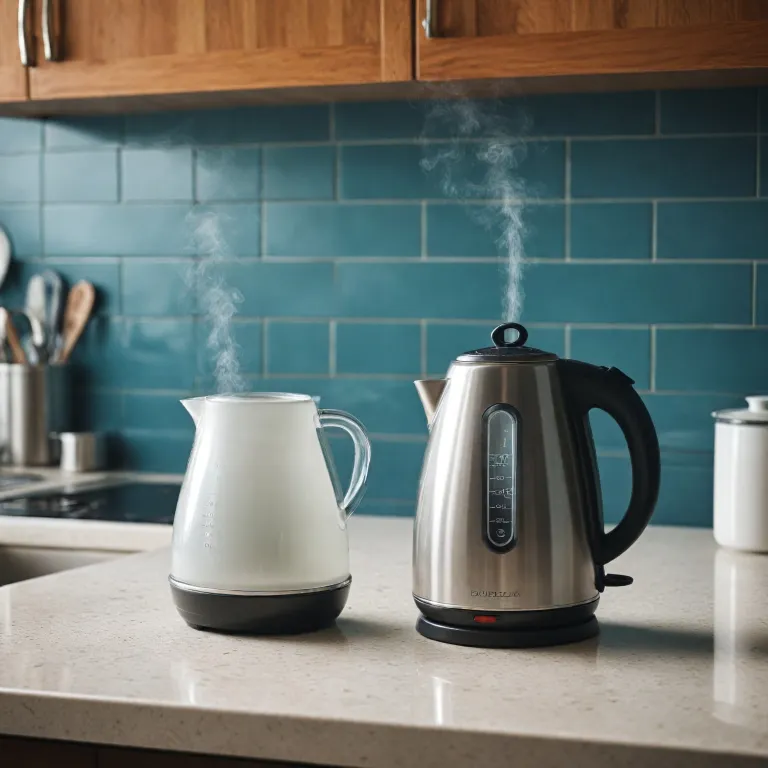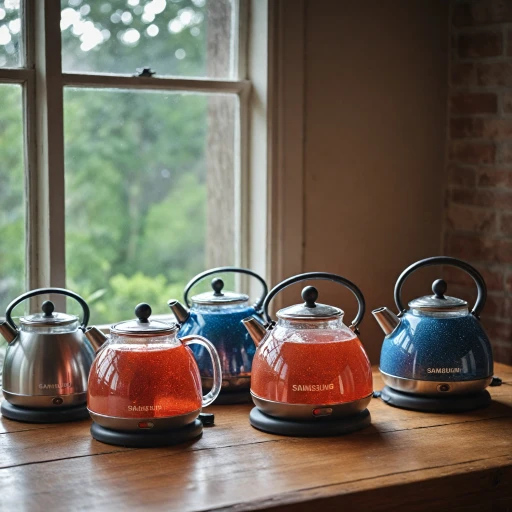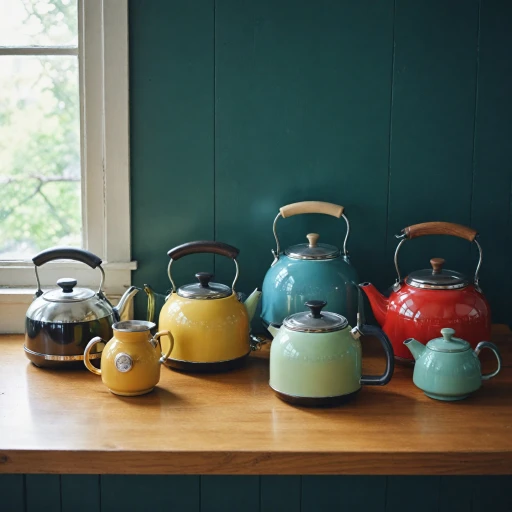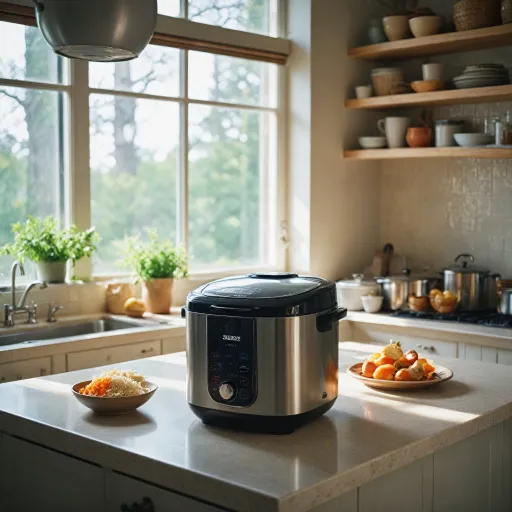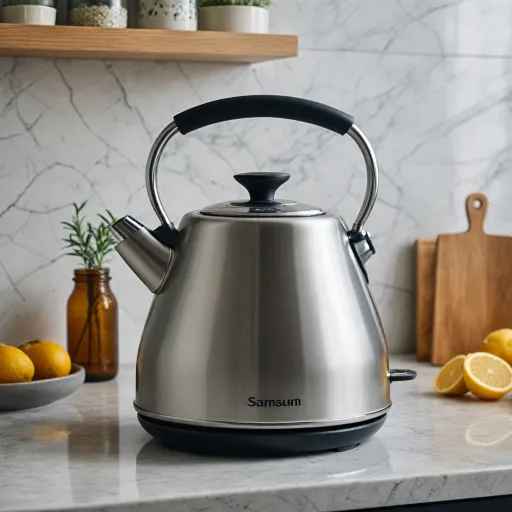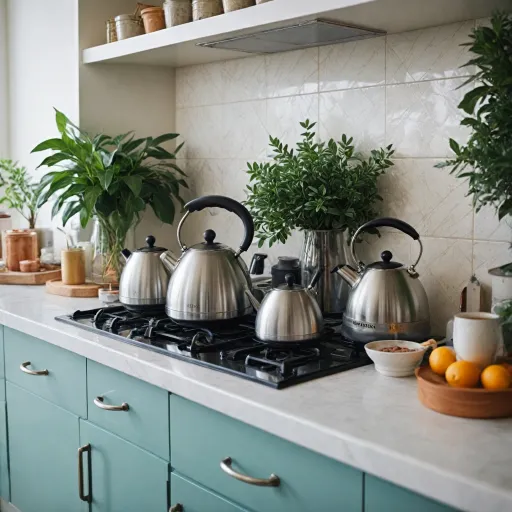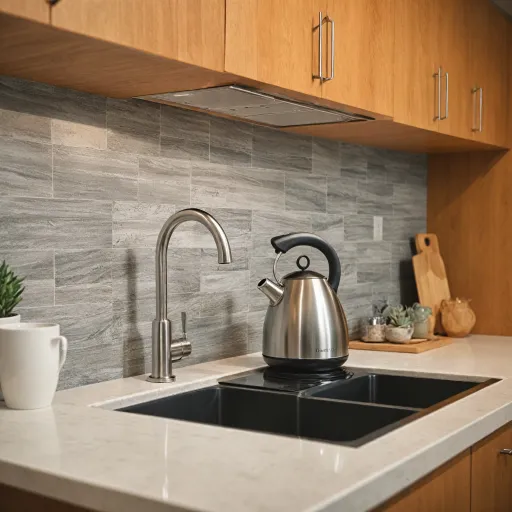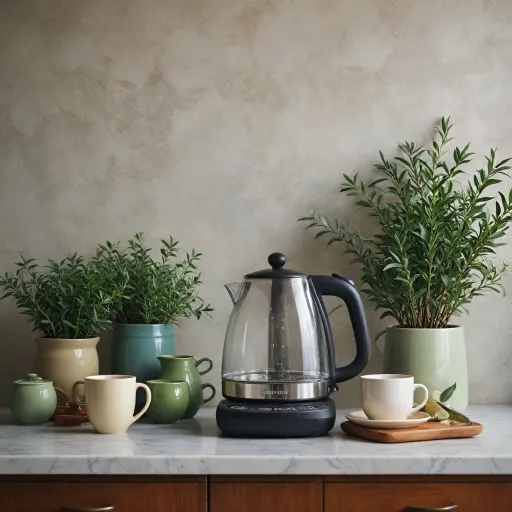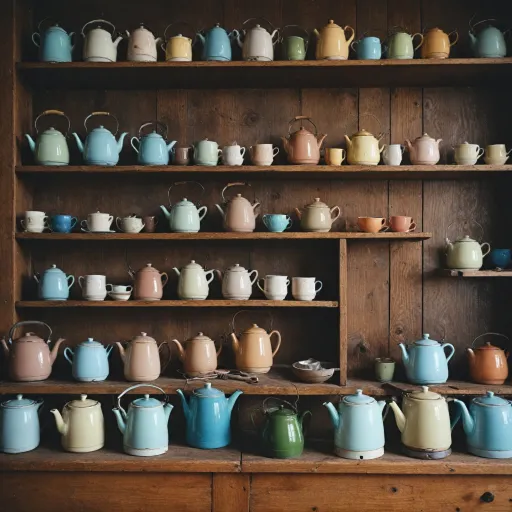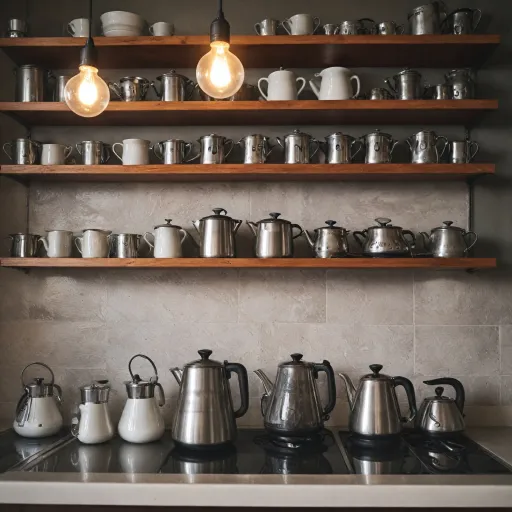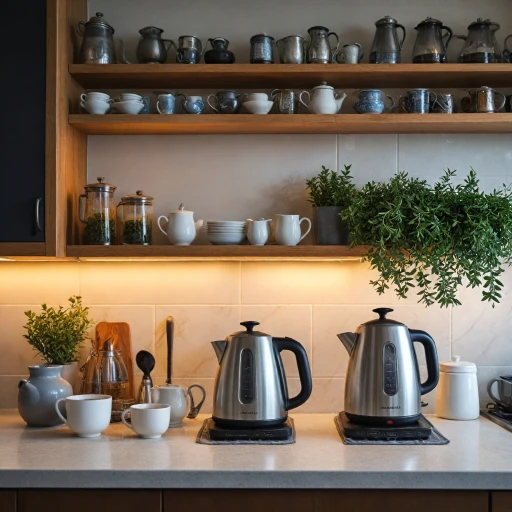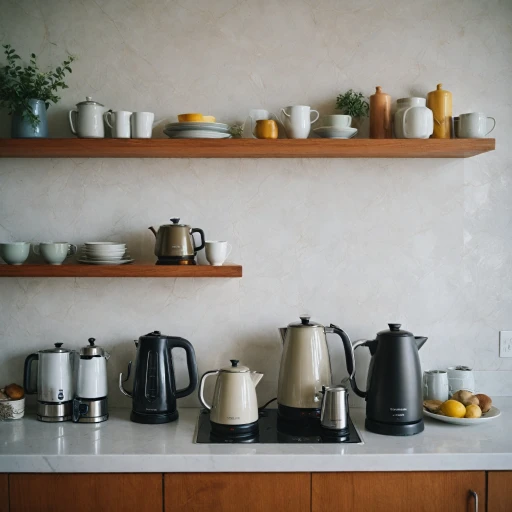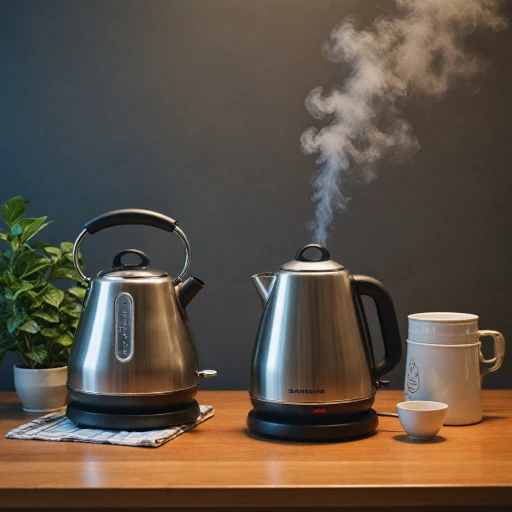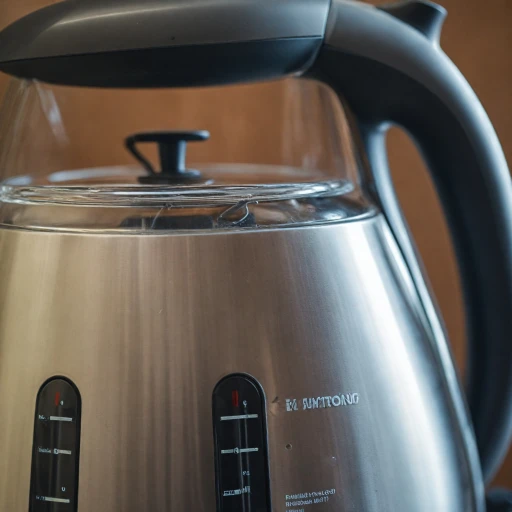
Understanding Energy Consumption in Electric Kettles
Delving into Power Usage Dynamics
Electric kettles have become a common household item thanks to their convenience and speed in boiling water. One fundamental aspect of these appliances that users often overlook is their energy consumption, which plays a pivotal role in their efficiency. Understanding how electric kettles utilize energy not only helps in making informed decisions but also in optimizing their use for better efficiency and less environmental impact. An electric kettle primarily uses electricity to heat water to its boiling point through a heating element. This process is essentially about converting electrical energy into heat energy. However, not all kettles are equal; they come in various models, and their designs can significantly affect their energy efficiency. For instance, kettles designed with a well-insulated body and efficient heating elements tend to conserve heat better and reduce the overall energy needed to boil water. On the other hand, kettles with poor insulation may require more energy as some of the heat escapes, resulting in longer boiling times. Moreover, the kettle's features—such as automatic shut-off and boil dry protection—play a role in conserving energy. These features prevent unnecessary energy usage by stopping the appliance once the water has reached the desired temperature or if the kettle is accidentally turned on without water. When considering how much energy your electric kettle uses, it’s also important to think about how often and how much water you boil. Larger volumes of water require more energy to heat up than smaller ones. Additionally, boiling only the amount of water you need can significantly enhance your kettle's energy efficiency. For further insights on the technical elements involved in heating, check out this comprehensive resource on heating elements in electric kettles. Practical energy-saving tips and an understanding of the kettle’s inner workings can make your tea time, or any other hot water needs, more energy-efficient.The Science Behind Maintaining Temperature
The Wonders of Consistent Heat Retention
Maintaining a stable water temperature in your electric kettle isn’t just a matter of convenience—it plays a crucial role in energy efficiency. If you’ve ever enjoyed a leisurely morning tea session, you've likely appreciated the simplicity of flicking the switch to reheat the hot water rather than starting from cold. But what goes on beneath the surface to make this possible?
Electric kettles that keep water warm use a combination of smart features designed to keep energy consumption low. These kettles are equipped with insulation materials that trap heat effectively, ensuring the water doesn’t lose temperature quickly. Moreover, with energy-efficient heating elements, the heating process becomes more streamlined, requiring less time and energy to maintain the desired heat.
Many modern kettle models come with “keep warm” functions that allow you to select a desired water temperature after the initial boiling. This feature not only prevents the water from cooling entirely but also reduces the energy needed to reboil it later. Constantly fluctuating temperatures can alter the water’s oxygen levels, potentially affecting the delicate flavors in your tea or coffee.
Efficiency in Kettle Design
Special attention is given to the design of kettles to maximize energy efficiency. Some employ advanced thermostatic technology that minimizes energy use while ensuring the water stays at an optimal temperature. It's a sophisticated balance between energy use and temperature management that customers increasingly demand.
For those seeking to understand these features in depth, examining your kettle's control panel is suggested. This component is often central to temperature regulation and operational efficiency. To better manage your electric kettle's functionality, consider reading more about this topic on mastering the control panel of your electric kettle. Harnessing the full potential of your device’s features can lead to significant energy savings and more consistent beverage experiences.
Reboiling: Pros and Cons
Reboiling: Analyzing Benefits and Drawbacks
Reboiling water in an electric kettle has long been a common practice, particularly for tea enthusiasts who appreciate their water piping hot. However, there's a need to weigh the pros and cons of this practice, especially in terms of energy efficiency and practicality. Reboiling involves heating the water again after it has cooled down, usually following the initial boil. This is often done when a warm beverage is desired but the kettle's contents have cooled to room temperature. Here's a breakdown of the advantages and disadvantages of reboiling your kettle:- Pros of Reboiling:
- Instant Hot Water: With reboiling, users can quickly obtain hot water within seconds without needing to wait for a fresh cycle. This efficiency can be beneficial when multiple beverages are consumed over a period of time.
- Water Oxygenation: Reboiling may aid in driving out any absorbed gases, like chlorine, improving water quality for certain uses.
- Cons of Reboiling:
- Increased Energy Consumption: Constantly reheating water can lead to high energy use, particularly if the heating element of the kettle isn't precisely designed for sustained efficiency. Over time, this could significantly impact electricity bills.
- Water Quality Degradation: Although heating can enhance some aspects of water, continuously boiling can lead to a decline in water taste and the formation of limescale, which might not be desirable for purists.
Comparative Analysis: Maintaining Temperature vs. Reboiling
Weighing the Benefits and Drawbacks
When deciding between maintaining temperature or reboiling your electric kettle, several factors come into play that might influence your choice. Both methods offer distinct advantages and disadvantages when it comes to energy, efficiency, and practicality, creating a balancing act for the environmentally-conscious tea enthusiast. Maintaining Temperature:- Energy Efficiency: We previously discussed how maintaining the temperature of hot water can be more energy efficient in certain cases. By not allowing the water to cool down completely, kettles designed to keep warm energy can minimize the need to start the heating element from scratch, saving time and electricity.
- Convenience: Keeping your water hot means you can enjoy your next cup of tea or coffee without the wait, enhancing convenience during busy times.
- Impact on Water Quality: However, there is evidence suggesting that maintaining high heat might impact the levels of dissolved oxygen in your water, potentially altering taste over time.
- Oxygen Replenishment: On the upside, allowing your kettle to cool completely before reboiling promotes the uptake of more dissolved oxygen, which can lead to fresher-tasting water.
- Higher Energy Use: The downside is that this process often means using more energy to achieve the desired boiling temperature, thus potentially increasing carbon footprint and electricity bills.
- Boiling Time: Starting from cold water means longer waiting times, which might be inconvenient in settings like busy households or during a rushed morning routine.
Practical Tips for Efficient Kettle Use
Optimize Your Kettle Usage for Maximum Efficiency
To make the most out of your electric kettle and ensure that you are using it in an energy-efficient manner, consider adopting the following practical tips:- Fill According to Your Needs: Only boil the amount of water you require. Electric kettles vary in design and boiling times, and boiling excessive water increases energy consumption unnecessarily. For a single cup of tea, just fill enough to match the volume water you need.
- Utilize Features Wisely: Many kettles come with "keep warm" or temperature-maintaining features. While these can save time, weigh the energy efficiency against frequent reboiling if you are not using the water immediately. Maintaining the water temperature can be more energy-efficient than letting it cool and boiling again.
- Choose the Right Model: Look for models designed with energy efficiency in mind. Stainless steel options can often maintain heat better. Additionally, advanced electric kettles feature precise temperature controls, which can effectively manage energy consumption.
- Prevent "Dry Boil" Situations: Always ensure that there's enough water to cover the heating element. This not only protects your kettle but also improves its energy efficiency by preventing unnecessary reheating. Many modern models include boil dry protection features for added safety.
- Regular Maintenance: Descale your kettle regularly to maintain optimal performance. Limescale buildup can impede heat transfer, prolonging boiling time and increasing energy use. Both the heating element and kettle interior should be free from mineral deposits to ensure efficient boiling.
